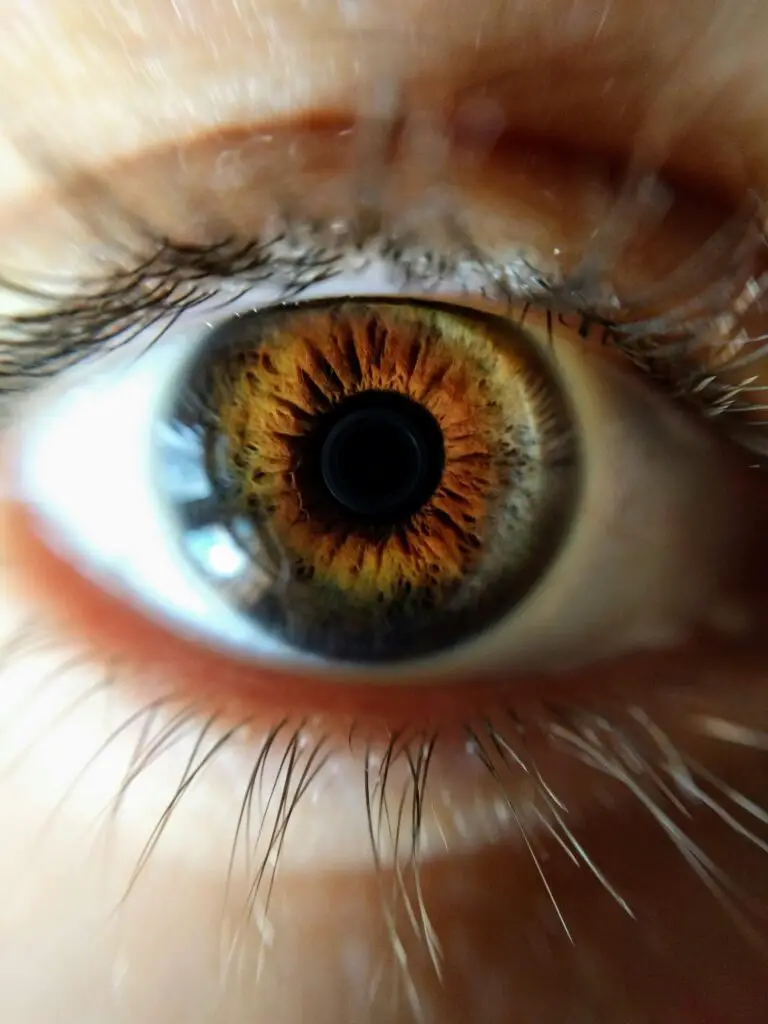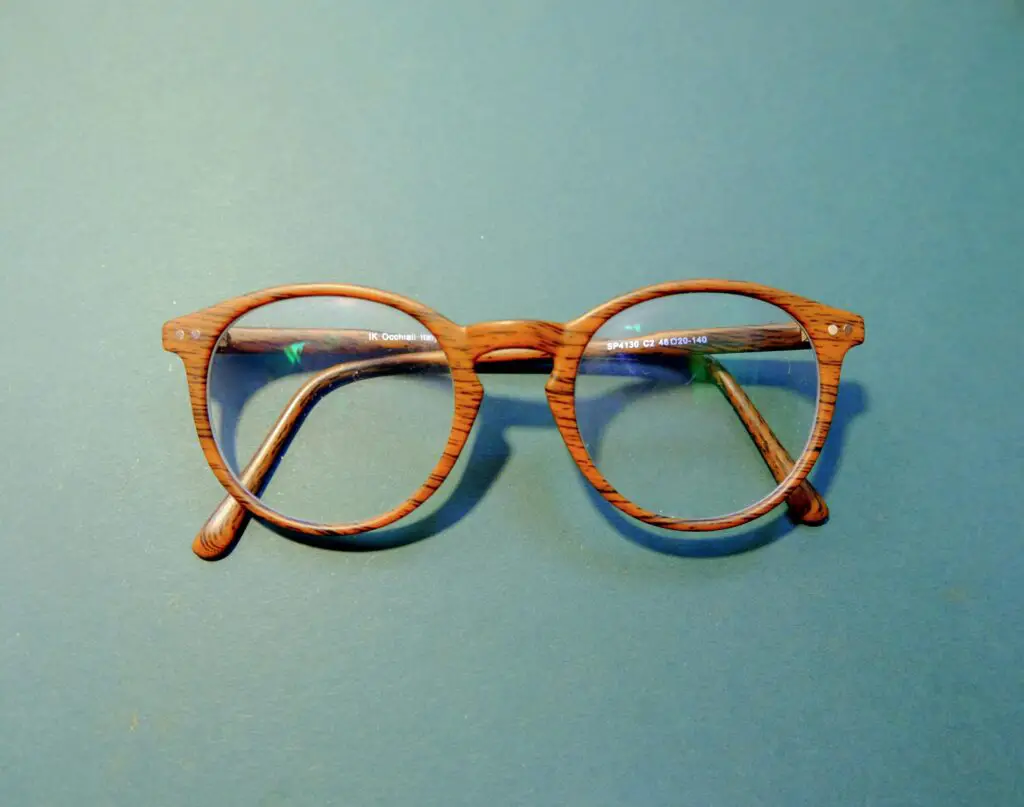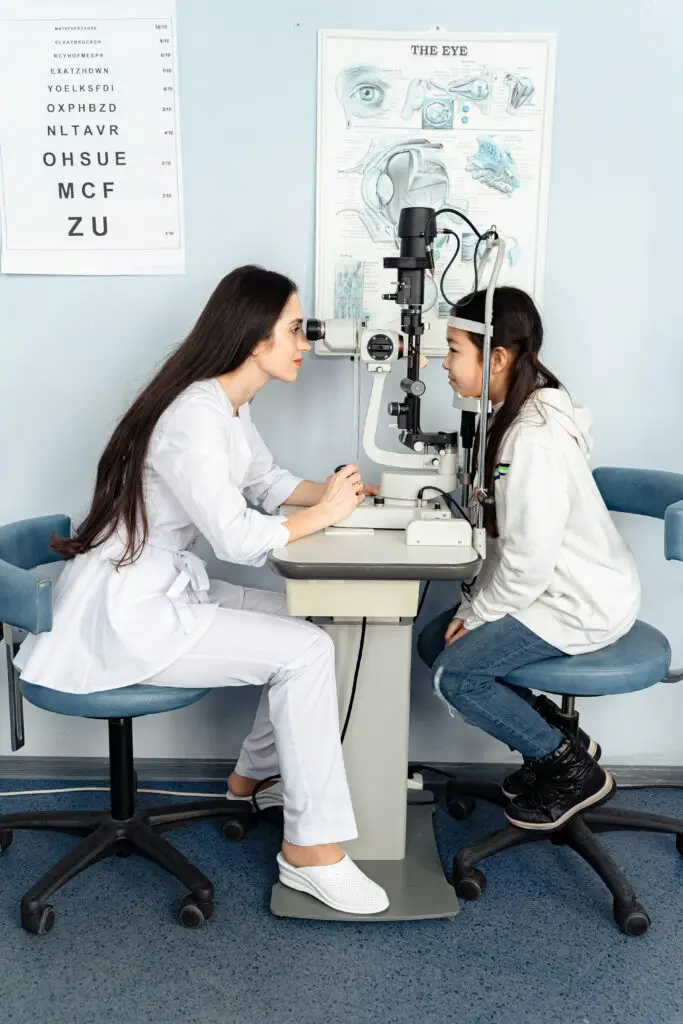The world of eye care is undergoing a dramatic transformation, and at the heart of this change is artificial intelligence (AI). From diagnosing eye conditions with unprecedented accuracy to personalizing treatment plans, AI is revolutionizing eye care in ways that were unimaginable just a decade ago.
As we look ahead to 2025, the integration of AI into ophthalmology and optometry promises to make eye care more accessible, efficient, and effective. In this blog post, we’ll explore how AI is revolutionizing eye care, the innovations shaping the future, and what patients and professionals can expect in the coming year.

The Rise of AI in Eye Care
Artificial intelligence, with its ability to analyze vast amounts of data and identify patterns, is proving to be a game-changer in healthcare. In eye care specifically, AI is revolutionizing eye care by enhancing diagnostic precision, streamlining workflows, and improving patient outcomes. Unlike traditional methods that rely heavily on human expertise, AI-powered tools can process images, predict disease progression, and even assist in surgeries with remarkable speed and accuracy.
The adoption of AI in eye care has been fueled by advancements in machine learning, computer vision, and big data analytics. These technologies allow AI systems to analyze retinal scans, detect abnormalities, and provide insights that help doctors make informed decisions. As we move into 2025, AI is revolutionizing eye care by making it more proactive, personalized, and accessible to people worldwide.
AI-Powered Diagnostics: A New Era of Precision
One of the most significant ways AI is revolutionizing eye care is through diagnostics. Eye diseases like diabetic retinopathy, glaucoma, and age-related macular degeneration (AMD) often require early detection to prevent vision loss. However, identifying these conditions in their early stages can be challenging, even for experienced ophthalmologists.
AI algorithms, trained on millions of retinal images, can now detect subtle signs of eye diseases with accuracy that rivals or even surpasses human experts. For example, AI systems can analyze optical coherence tomography (OCT) scans to identify early markers of glaucoma or diabetic retinopathy. By catching these conditions early, AI is revolutionizing eye care by enabling timely interventions that can save patients’ vision.
In 2025, we can expect AI diagnostic tools to become even more sophisticated. These tools will likely integrate with wearable devices and smartphone apps, allowing patients to monitor their eye health from home. Imagine a world where a quick scan with your smartphone can alert you to potential issues before they become serious. This is the future that AI is revolutionizing eye care to create.
Telemedicine and Remote Eye Care
The rise of telemedicine has been accelerated by AI, and eye care is no exception. AI is revolutionizing eye care by making it possible for patients in remote or underserved areas to access high-quality diagnostics and consultations without visiting a clinic. AI-powered teleophthalmology platforms can analyze images uploaded by patients or primary care providers and provide instant feedback on potential issues.
For instance, portable retinal cameras paired with AI algorithms can screen for conditions like diabetic retinopathy in rural clinics or community health centers. These systems can flag abnormalities and connect patients with specialists for further evaluation, all without the need for expensive equipment or in-person visits. By democratizing access to eye care, AI is revolutionizing eye care for millions who previously had limited options.
Looking ahead to 2025, AI-driven telemedicine platforms will likely become more integrated with electronic health records (EHRs) and wearable devices. Patients may be able to use smart contact lenses or glasses embedded with AI sensors to monitor their eye health in real time. These advancements will make eye care more convenient and inclusive, ensuring that AI is revolutionizing eye care for people of all backgrounds.

Personalized Treatment Plans
No two patients are alike, and AI is revolutionizing eye care by enabling highly personalized treatment plans. Traditional eye care often follows a one-size-fits-all approach, but AI can analyze a patient’s unique medical history, genetic profile, and lifestyle factors to recommend tailored interventions.
For example, AI systems can predict how a patient’s glaucoma might progress based on their retinal scans and demographic data. This allows doctors to adjust treatment plans proactively, whether that means prescribing specific medications, recommending lifestyle changes, or scheduling follow-up visits. By personalizing care, AI is revolutionizing eye care by improving outcomes and reducing the risk of complications.
In 2025, we can expect AI to take personalization to the next level. Machine learning models will likely incorporate real-time data from wearable devices, such as intraocular pressure monitors, to provide dynamic treatment recommendations. This will empower patients to take an active role in managing their eye health while ensuring that AI is revolutionizing eye care through precision and customization.
AI in Eye Surgery: Precision and Safety
Surgery is one of the most delicate aspects of eye care, and AI is revolutionizing eye care by enhancing surgical precision and safety. AI-powered robotic systems are already assisting surgeons in procedures like cataract surgery and laser vision correction. These systems use real-time imaging and AI algorithms to guide surgeons, ensuring greater accuracy and reducing the risk of complications.
For instance, in cataract surgery, AI can analyze intraoperative images to help surgeons position intraocular lenses with pinpoint accuracy. This leads to better visual outcomes and faster recovery times for patients. Similarly, AI-assisted laser systems can map the cornea in real time during LASIK procedures, ensuring optimal results.
By 2025, AI-driven surgical tools will likely become standard in operating rooms. We may see fully autonomous robotic systems performing certain procedures under human supervision, further improving efficiency and safety. As these technologies evolve, AI is revolutionizing eye care by making surgeries less invasive and more effective.

Enhancing Patient Education and Engagement
AI is revolutionizing eye care not only for doctors but also for patients. Understanding one’s eye health can be complex, but AI-powered tools are making it easier for patients to stay informed and engaged. Chatbots and virtual assistants, for example, can answer questions about eye conditions, explain treatment options, and provide reminders for medication or follow-up appointments.
These tools use natural language processing (NLP) to communicate in a human-like, conversational tone, making them accessible to people of all ages. By empowering patients with knowledge, AI is revolutionizing eye care by fostering better communication between patients and providers.
In 2025, we can expect AI-driven patient education platforms to become more interactive. Virtual reality (VR) and augmented reality (AR) applications, powered by AI, may allow patients to visualize their eye conditions and treatment options in 3D. This immersive approach will make complex concepts easier to understand, ensuring that AI is revolutionizing eye care by bridging the gap between patients and professionals.

Addressing Ethical and Accessibility Challenges
While AI is revolutionizing eye care, it also raises important ethical and accessibility considerations. For instance, ensuring that AI algorithms are trained on diverse datasets is critical to avoiding biases in diagnostics or treatment recommendations. If an AI system is trained primarily on data from one demographic group, it may not perform as well for others, potentially exacerbating health disparities.
Additionally, the cost of AI-powered tools could limit access for low-income patients or those in developing countries. To truly ensure that AI is revolutionizing eye care for everyone, developers and policymakers must prioritize affordability and inclusivity.
By 2025, we can expect increased efforts to address these challenges. Regulatory bodies may establish guidelines for ethical AI development in healthcare, while nonprofit organizations and governments could fund initiatives to bring AI-powered eye care to underserved regions. These steps will ensure that AI is revolutionizing eye care in a way that benefits all of humanity.
The Role of Wearable Technology
Wearable technology is another area where AI is revolutionizing eye care. Smart glasses, contact lenses, and other devices equipped with AI sensors can monitor eye health metrics like intraocular pressure, tear production, or even blood glucose levels for diabetic patients. These devices provide real-time data that AI systems can analyze to detect abnormalities or predict disease progression.
For example, smart contact lenses in development can measure intraocular pressure continuously, alerting patients and doctors to potential glaucoma flare-ups. By catching issues early, these devices help prevent irreversible damage, showcasing how AI is revolutionizing eye care through innovation.
In 2025, wearable technology will likely become more mainstream, with AI-driven devices available at lower costs. These tools will empower patients to take charge of their eye health while providing doctors with valuable data for better decision-making. As wearables become more integrated into daily life, AI is revolutionizing eye care by making it proactive and preventive.
The Future of AI in Eye Care: What to Expect in 2025
As we approach 2025, the potential for AI to transform eye care is limitless. Here are some key trends to watch for:
- Widespread Adoption of AI Diagnostics: AI-powered screening tools will become standard in clinics, pharmacies, and even homes, making early detection of eye diseases more accessible.
- Integration with Wearables: Smart glasses and contact lenses will provide continuous monitoring, enabling real-time insights into eye health.
- AI-Driven Surgical Advancements: Autonomous robotic systems will assist in more complex procedures, improving precision and outcomes.
- Global Access to Eye Care: AI-powered telemedicine platforms will expand access to eye care in underserved regions, reducing disparities.
- Enhanced Patient Engagement: AI-driven apps and VR tools will make it easier for patients to understand and manage their eye health.
These advancements highlight how AI is revolutionizing eye care by pushing the boundaries of what’s possible. From diagnostics to surgery to patient education, AI is transforming every aspect of the field.

Challenges to Overcome
Despite its promise, the integration of AI into eye care comes with challenges. Data privacy is a major concern, as AI systems rely on sensitive patient information to function effectively. Ensuring that this data is secure and used ethically will be critical to maintaining trust.
Additionally, the rapid pace of AI development means that regulatory frameworks must keep up to ensure patient safety. Ophthalmologists and optometrists will also need training to effectively use AI tools and interpret their outputs. By addressing these challenges, the industry can ensure that AI is revolutionizing eye care in a responsible and sustainable way.
A Bright Future for Eye Care
As we look toward 2025, it’s clear that AI is revolutionizing eye care in profound ways. From improving diagnostics and personalizing treatments to enhancing surgical precision and expanding access, AI is reshaping the way we approach eye health. Patients can look forward to more convenient, accurate, and personalized care, while professionals will benefit from tools that streamline their work and improve outcomes.
The journey is just beginning, but the potential for AI to transform eye care is immense. By embracing these innovations and addressing the challenges, we can ensure that AI is revolutionizing eye care for the better, creating a future where vision loss is preventable, and quality eye care is available to all. As we move into 2025, one thing is certain: the future of eye care is brighter than ever, thanks to AI.
How is AI used in eye care diagnostics?
AI analyzes retinal scans and images to detect eye diseases like glaucoma and diabetic retinopathy with high accuracy.
Can AI improve access to eye care?
Yes, AI-powered telemedicine and portable devices make eye care available in remote and underserved areas.
Will AI replace eye doctors?
No, AI assists doctors by enhancing diagnostics and efficiency, but human expertise remains essential.
How does AI personalize eye treatments?
AI uses patient data, like medical history and scans, to create tailored treatment plans.
Is AI used in eye surgeries?
Yes, AI-guided robotic systems improve precision in procedures like cataract surgery and LASIK.
